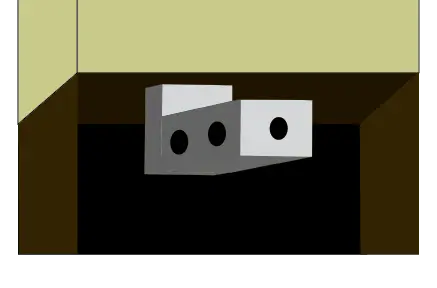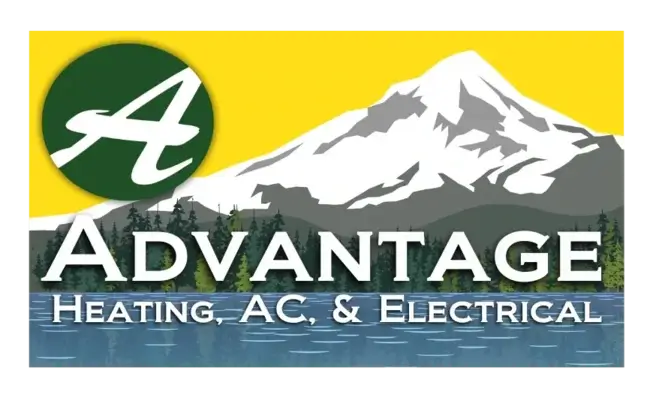How Can HVAC Zoning Save Money?
If you shopped for a new HVAC system or did any research related to HVAC systems any time recently, you probably heard something about HVAC Zoning. Another term you may have heard is a multistage or two-stage system. But what does that all mean?
It’s not just a sales rep using technical terms to talk you into something. Although, you should worry if they can’t break it down into simple terms.
Zoning is a mode of running an HVAC system that heats and cools different parts of your home separately. Multistage or Two-stage equipment refers to the type of furnace or AC unit needed to use zoning. There are several benefits to using zoning and we can easily explain them.
In this post, we’ll explain exactly what zoning is and how it works. We’ll also explain what is required to use zoning. We hope you will know if zoning is right for you by the end.
What Is HVAC Zoning?
As we stated earlier, HVAC zoning is a way to set up and run an HVAC system to heat and cool different parts of a home independently from each other. Typically, this will look like having a smart thermostat that breaks your home up into 2 to 4 zones. It can sometimes go higher, but the typical home will have 2 zones:
- Upstairs
- Downstairs
You can set each of these zones to a different temperature and they each have their own thermostat to check the ambient temperature in that zone.

Depending on what smart thermostat you have, it may also have an app to use with it. This will allow you to control your home thermostat remotely. That means that if you’re having a lazy day and are cozy on the couch, then you don’t need to get up to change the temperature.
The Benefits of HVAC Zoning
There are several benefits to HVAC zoning. This ranges from the basics of home comfort to saving money on energy and utilities.
- Cater to Every Family Member’s Needs
- Save Money on Energy
- Bespoke to the Home
- Variable Levels of Airflow
Family Member’s Needs
Everyone has a preferred temperature. Of course, this has turned into the running gag of spouses or partners fighting over the thermostat. If you have family members with medical conditions, they may require the home to be cooler or hotter than what is comfortable for others. With zoning, you could set the area they spend most of their time in separate from the others so that everyone can be comfortable throughout the day.
Variable Airflow
Traditional HVAC systems have two settings: off or on. When they’re on, they’re running at 100%. With the smart systems used for HVAC zoning, they can scale how much airflow they send. It’s like a dimmer on a light switch. It can go from a little to a lot depending on what you need.
That means that if you need the temperature in one area adjusted by one degree, it will produce just enough airflow to do that without blasting air throughout your home. This helps to prevent cold or hot spots from forming in the rooms in your home.
This also results in saving money on energy and utilities, as it will only use enough energy to make a minor change.
Energy Savings
The reasoning mentioned above explains why zoning can cause savings on your monthly energy bill. The Department of Energy estimates that homes with HVAC Zoning save 30% – 35% on their annual energy usage compared to homes that don’t.
What Kind of Homes Need HVAC Zoning?
We just explained that HVAC zoning can help you save money on energy and utilities. It can also make you more comfortable by catering to family member’s individual needs or pushing airflow to the areas that need it most.
So, what kinds of homes receive the most of these benefits?
Two Story
If you have a two-story home, you probably noticed that it is harder to keep your upstairs cool. Simply put, heat rises. As much as we want to, we have not yet made a work-around for the laws of physics. However, HVAC zoning can compensate for them. By putting your upstairs in a separate zone from your downstairs, your HVAC system will detect the difference in temperature and pump more cool air to your second floor.
Less Used Rooms
When a traditional HVAC system turns on, it turns on to 100% throughout the entire home. This is an inefficient way to run a system and can actually lead to unnecessary spending on energy bills. If you have an area that you don’t use often, you could waste money by heating or cooling it when you don’t need to. If that area were in a different zone from the rest of your home, your HVAC system would not send airflow to that area.

Specialty Rooms
If you have a gym or hobby area that gets hot, it might need more cooling than the rest of your home. Zoning would allow you to cool that area adequately without freezing the rest of your home.
Lots of Large Windows
If your home has an area with lots of large windows, then it could leak heat through the glass. This could be heat coming to make it too hot in summer, or heat going out to make it too cold in winter.
What Are the Requirements for HVAC Zoning?
If it sounds like you could save money or make your home more comfortable, then you should also learn about the requirements. Zoning requires more modern HVAC equipment and there is typically some cost involved.
Two-Stage or Variable-Speed System
The most important part of a zoned HVAC system is the multi-stage equipment. This kind of equipment is much more efficient than traditional HVAC equipment and can adjust the speed it works at.
Traditional Furnaces and Air Conditioners are only ever either on or off. Two-stage equipment has a high or low setting. This allows the equipment to adjust how much power it’s using if it’s in high or low demand.
A Variable-Speed system has a much wider range of options. This allows the furnace or AC unit to get very specific about how much power it uses and how much airflow it generates.
Without multiple output settings, your HVAC equipment could not service each zone of your home. It would simply create too much hot or cold air that would either make your home uncomfortable or get backed up and damage your equipment.
Efficient Duct Trunks
Zoning requires ducts to reach each zone that is being conditioned. Most modern developers build homes with efficiency in mind. That means that they have duct trunks built to reach most areas of the home. They may not have the duct work already installed, but the trunks should be there.
If the home you are hoping to use HVAC zoning in does not have these trunks, or does not have preexisting ductwork, then additional duct runs and extensions will need to be built so that your HVAC system can affect the entire home.

Smart Thermostat
The second most important part of a smart HVAC system is the smart thermostat and the control panel. The thermostat is the interface you use to control the setting for each zone. It must be a smart thermostat capable of being programed for zone control. The control panel is the piece of technology that receives your commands and makes the HVAC system act accordingly.
Automatic Dampers
You will also need automatic dampers to control the flow of air and make sure that it only goes to the zones that need it. These dampers will open and close to direct airflow down the right ducts and into the correct zones. As the thermostats in each zone detect the change in the temperature, the dampers will change accordingly.
These do not come standard on ductwork, so if you are looking to upgrading to HVAC zoning, then they will need to be installed.
Cost
There is some cost to upgrading almost every facet of your existing HVAC system. A large amount of the cost actually goes to the labor of designing and testing the zoning layout and the time to install everything.
Across the United States, the average starting cost for upgrading to HVAC zoning starts between $4,500 and $8000. That starting price is the cost for the design, thermostat, electrical, and any extensions or runs added to the ductwork. The price will increase when new equipment is required.
If you just bought your home, it may already have the duct trunks and variable speed equipment. In which case, you would just need to upgrade the thermostat and install the automatic dampers.
If you are installing a whole new system or are replacing old equipment with new multistage equipment, then you will need to factor in the cost of a new HVAC system.
Altogether, that could run you somewhere around $25,000. You don’t need to pay that all at once though, as some HVAC contractors offer convenient payment options.
Who Are Advantage Heating and Air Conditioning?
We are your local HVAC Experts out of Salem, Oregon. We hope that this post gave you the information you need to know if HVAC zoning is right for you. If you have other questions about HVAC systems, check out our other blogs. To learn more about who we are and how we can help you, visit our website and follow us on social media – we’re here when you need us!







